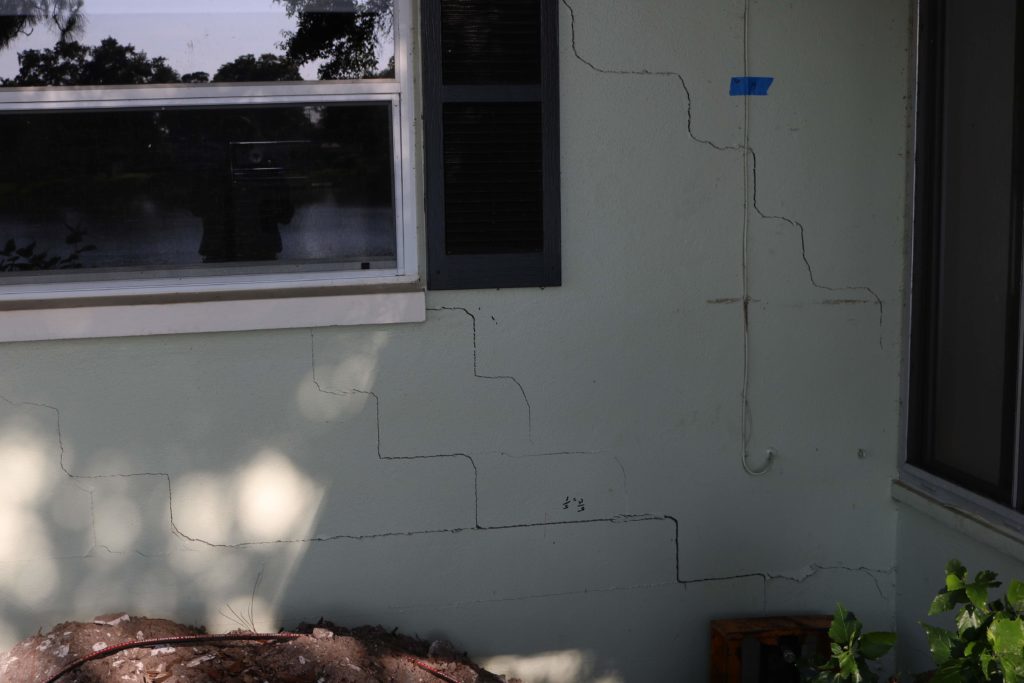You have probably heard it said many times that the quality of a home’s foundation is the most important element in its construction. This is true because faults in the base of your house will compound their effects as the remainder of the house is constructed.
The Domino Effects of a Poor Foundation
If the base is not square or is out of level, for instance, the remainder of the home’s components will not fit properly. Furthermore, if the foundation was improperly installed or the ground beneath it not prepared correctly, then you have the potential for failure years later after construction is complete.
If you already reside in your house the foundation is what it is at this point. However, that does not mean you can ignore issues vital to its health and thus the well-being of your home. The following are six of the most common mistakes homeowners make when it comes to foundation care in Florida whether you live in Tampa, Naples, Miami or Orlando.
Mistake Number One – Failure to Inspect
By far, one of the biggest mistakes homeowners make about their foundation is simply ignoring support issues by not periodically inspecting for common faults such as cracks, a void or settling due to changing soil conditions. These inspections are especially important if your house is — as most Florida homes are — built upon granular soils. It is equally important to look for soil structural problems away but near to the home as well. Many a small earth crack or hole has, for example, turned into a massive Florida sinkhole.
Mistake Number Two – Procrastinating Repair
It may be hard to believe, but even those homeowners who do pay attention to their foundations often diminish the significance of defects they discover. We all tend to want to brush off potential bad news and hope it goes away, but with foundations that are not going to happen.
Evidence of settling, gaps or even minor cracks needs to be evaluated by a remediation expert to determine if those are going to turn in to major, expensive repairs if not fixed soon. You may already see where things are going if windows or doors are not shutting properly or there are cracks in interior walls.
Mistake Number Three – Starting Renovations Before Fixing the Base

Some folks even take their procrastination of needed foundation remediation further. Whether they know if their home’s base needs help or not, they plan and execute home renovations ahead of even foundation inspections let alone repairs. Any home remodeling, just like the original home’s construction, needs to consider the foundation first.
If remediation is put off until after a renovation project, it is not uncommon for the new construction to be damaged due to having to later lift either the house or the underlying structure itself. Ground remediation may require lifting as well in order to install, for example, underpinning or compaction grouting. These lifts could cause a crack or void in interior walls or damage plumbing and electrical systems.
Mistake Number Four – Placing Large Plants Too Close to the Home
One hot Florida summer is enough to convince anyone of the value of shade trees on their property. However, trees, hedges and other large plants can have a serious side effect for your foundation as they alter the moisture content of the soil underneath. Their extraction of moisture shrinks granular soils, which may produce cracks beneath the base that cause leaning or fractures.
If the trees or shrubbery are already in place and you don’t want to remove them, then it is critical that you maintain the soil moisture around the perimeter of the house. Do this by regularly watering with a hose or sprinklers for at least 20 minutes each dry day.
Mistake Number Five – Not Maintaining Foundation Drainage
Naturally, ground that is too wet may also give rise to severe problems for your foundation. Excess moisture causes the soil to swell creating pressure and unintended consequences. Therefore, hopefully, drainage tubing was placed at the bottom of the foundation when it was installed.
However, it is essential that you regularly check this drainage to ensure it is working properly. Poor drainage often starts with excessive leaves or other debris entering the downspouts or clogged downspouts that result in water overflowing the eave troughs.
Especially in areas of Florida, such as Orlando or Miami, where annual rainfall can easily exceed 50 inches, a correctly working drainage system needs to be in place to keep drainage working as it was intended.
The Final Mistake – Not Hiring a Professional for the Job
Any homeowner can walk the perimeter of the house looking for irregularities in the home’s foundation or retaining walls. Unevenness, fissures, openings and so on are typically spotted with the naked eye. If other symptoms exist — such as floors being out of level or doors sticking — even without obvious foundation defects, this should tip you off that something is not right down below.
Consulting with a building contractor or a knowledgeable friend is a reasonable next step. In the end, however, you must get the advice of a company that specializes in soil remediation and foundation repair to form an accurate picture of what is going on. They have the necessary expertise and equipment to determine if there is a foundation or ground problem and recommend the most cost-efficient and relevant remedies.